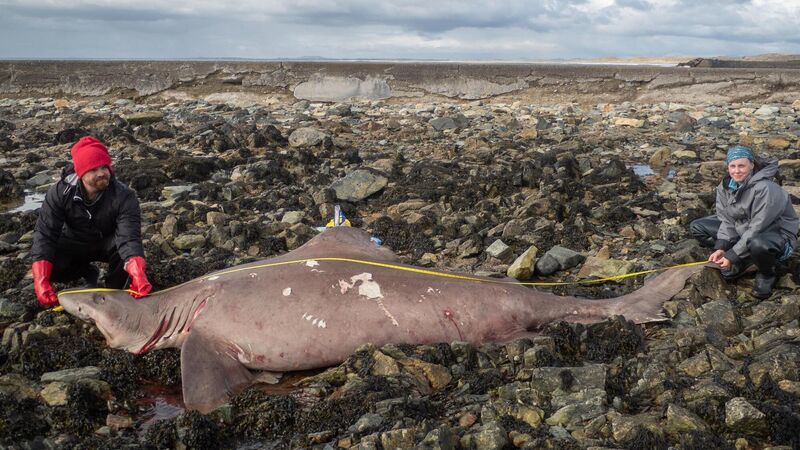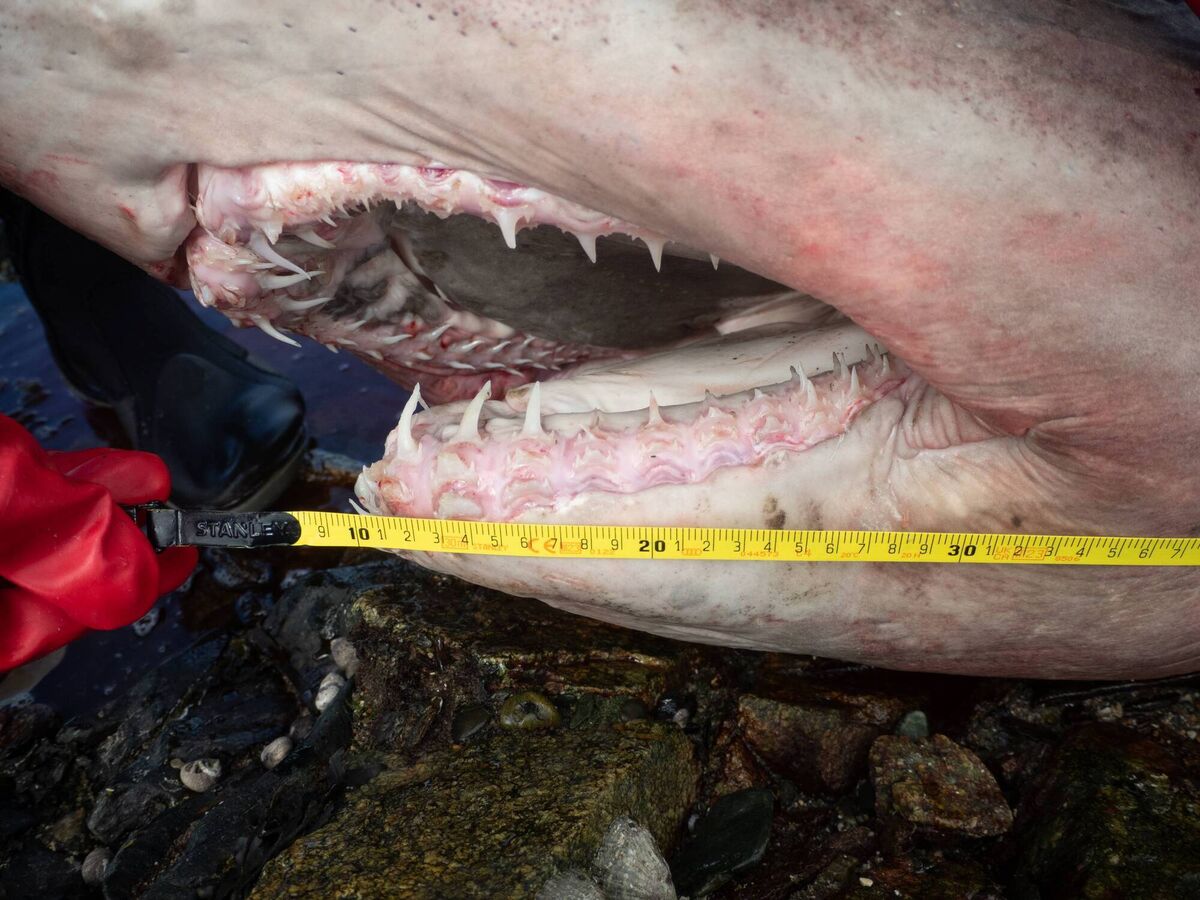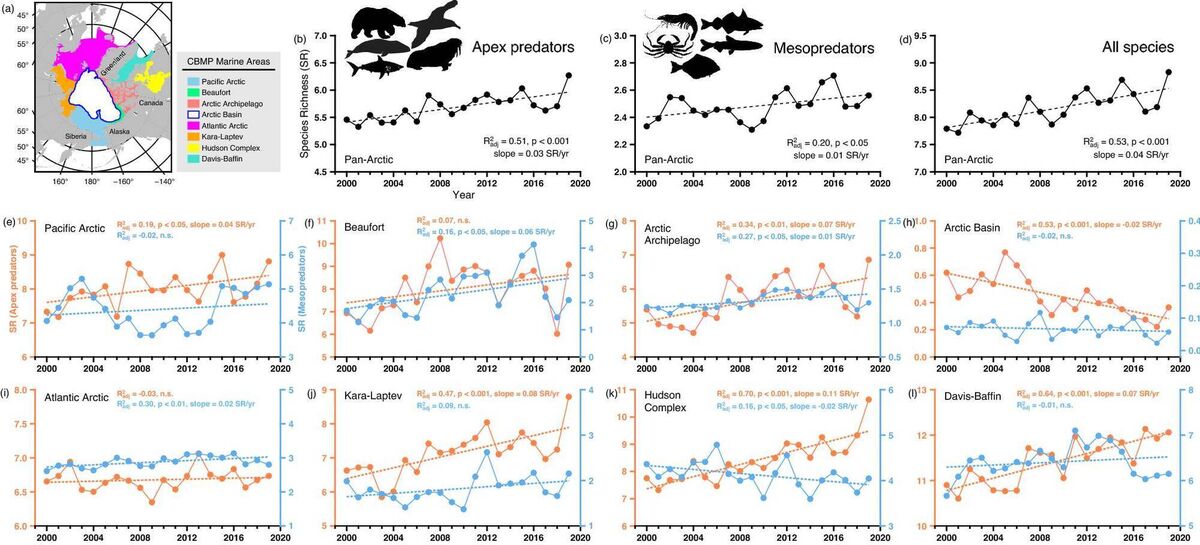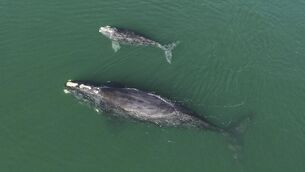Warming Arctic draws marine predators northwards

Kevin Purves (left) and Dr Jenny Bortoluzz holding a small tooth sand tiger shark, which washed up on the shores of Co Wexford, scientists believe to it be the first official record of the species in Irish waters. The shark is rarely seen by humans as it normally lives offshore in waters more than 100m deep. At 14 feet long, the female shark discovered in Wexford is at the upper end of the size limits for the species. Picture: Trinity College Dublin/Dr Jenny Bortoluzzi and Kevin Purves/PA Wire
'By the creek of Baginbun, Ireland was lost and won'
In 1170 Raymond ’Le Gros’ is said to have landed, with a hundred men, 12km to the west of Kilmore Quay. A tourist, walking along the beach near there recently, came on the remains of a huge fish. The carcase turned out to be that of a sand tiger shark, a species new to Irish waters. It was April 1, but this was no Fool’s Day joke. Another sand tiger, the first for Britain, had been found on Lepe Beach, Hampshire, in March. The arrival of these giants prompts an intriguing question; is a shark version of the Norman Invasion underway?
The porbeagle (‘porpoise-beagle’?) is the reigning apex predator of our seas. But are its days on the throne numbered? The great white shark, a cousin, roams the Bay of Biscay, 400km to the south. As sea temperatures rise, will the rich pickings available in the Celtic Sea tempt it to venture into our waters?
But fear not, ye bathers on beautiful Baginbun Beach; there’s no evidence that ‘le requin’, the ‘requiem’, has arrived here as yet. Nor do sand tigers, despite their fearsome appearance, attack people. A few ‘incidents’, none of them fatal, have been recorded but can we blame an unfortunate creature, trapped in a net and dragged onto a boat, for biting its tormentor? I remember visiting Dingle Aquarium with Éanna Ní Lamhna, many years ago, when she togged off and swam in the tank with a tiger.

Nor should the porbeagle, a vigorous hunter able to generate its own body heat, fear being upstaged — sand tigers are laid-back and slow-moving by shark standards.
The Polar Regions are warming much more rapidly than temperate ones. With the disappearance of sea-ice, new areas are opening for colonisation. Scientists are cautious as to the extent of population shifts but biologist Anne Marie Power of NUIG once told The Irish Times that "we do have more frequent reports of puffer-fish, trigger-fish, sunfish, thresher sharks and golden-head seabream in (our) waters".
According to a paper just published, an invasion has been underway, on a broad front, over recent decades. Researchers, led by Irene Alabia of Hokkaido University, have studied ’the spread of 69 apex predator and meso-predator species into eight Arctic regions from 2000 to 2019’. They combined their results ’with climate and productivity data across the same period, to map species-specific habitat distributions’.Driven by climate change, and increases in prey species diversity resulting from it, predators are indeed moving northwards. The wanderers include whales and seabirds as well as sharks, although the pattern of colonisation varies widely between areas. Smaller predatory fish, as well as invertebrates such as crabs, ‘exhibited relatively lower northward migration’. They are confined to ‘the shallow continental shelf of the Atlantic and Pacific’.

Recent changes in biodiversity and species occurrence, the researchers say, are "driven by pervasive poleward range shifts, especially for wide-ranging apex predators". Rates of climate change, and its ecosystem impacts, "are increasingly amplified and expected to progress further in the 21st Century".
- Irene Alabia et al. Pan-Arctic marine biodiversity and species co-occurrence patterns under recent climate. Scientific Reports. 2023
Read More
CLIMATE & SUSTAINABILITY HUB








